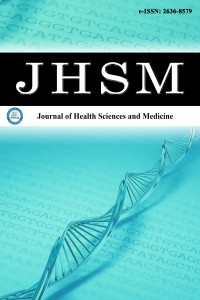1. Guan WJ, Ni ZY, Hu Y, et al. China Medical Treatment Expert
Group for COVID-19. Clinical characteristics of coronavirus
disease 2019 in China. N Engl J Med 2020; 382: 1708-20.
2. Jin JM, Bai P, He W, et al. Gender differences in patients with COVID-19: focus on severity and mortality. Front Public Health 2020; 8: 152.
3. vom Steeg LG, Klein SL. SeXX Matters in Infectious Disease Pathogenesis. PLoS Pathog 2016; 12: e1005374.
4. Wambier CG, Goren A. Severe acute respiratory syndrome coronavirus 2 (SARS-CoV-2) infection is likely to be androgen mediated. J Am Acad Dermatol 2020; 83: 308-9.
5. W ambier CG, V año-Galván S, McCoy J, Pai S, Dhurat R, Goren A. Androgenetic alopecia in COVID-19: compared to age-matched epidemiologic studies and hospital outcomes with or without the Gabrin sign. J Am Acad Dermatol 2020; 83: e453-4.
6. Nielsen HC, Zinman HM, T orday JS. Dihydrotestosterone inhibits fetal rabbit pulmonary surfactant production. J Clin Invest 1982; 69: 611-16.
7. Hoffmann M, Kleine-Weber H, Schroeder S, et al. SARS-CoV-2 cell entry depends on ACE2 and TMPRSS2 and is blocked by a clinically proven protease inhibitor. Cell 2020; 181: 271-80
8. Lucas JM, Heinlein C, Kim T, et al. The androgen-regulated protease TMPRSS2 activates a proteolytic cascade involving components of the tumor microenvironment and promotes prostate cancer metastasis. Cancer Discov 2014; 4: 1310-25.
9. Asselta R, Paraboschi E, Mantovani A, Duga S. ACE2 and TMPRSS2 variants and expression as candidates to sex and country differences in COVID-19 severity in Italy. Aging (Albany NY) 2020; 12: 10087-98.
10. W ambier CG, Goren A, V año-Galván S, et al. Androgen sensitivity gateway to COVID-19 disease severity. Drug Dev Res 2020; 81: 771-76.
11. Bennett CL, Price DK, Kim S, et al. Racial variation in CAG repeat lengths within the androgen receptor gene among prostate cancer patients of lower socioeconomic status. J Clin Oncol 2002; 20: 3599-604.
12. McCoy J, Wambier CG, Vano-Galvan S, et al. Racial variations in COVID-19 deaths may be due to androgen receptor genetic variants associated with prostate cancer and androgenetic alopecia. Are anti-androgens a potential treatment for COVID-19? J Cosmet Dermatol 2020; 19: 1542-43.
13. Montopoli M, Zumerle S, Vettor R, et al. Androgen-deprivation therapies for prostate cancer and risk of infection by SARS-CoV-2: a population-based study (N = 4532). Ann Oncol 2020; 31: 1040-45.
14. Severe COVID-19 GWAS Group, Ellinghaus D, Degenhardt F, et al. Genomewide association study of severe COVID-19 with respiratory failure. N Engl J Med 2020; 383: 1522-34.
15. Lai J-J, Chang P, Lai K-P, Chen L, Chang C. The role of androgen and androgen receptor in skin-related disorders. Arch Dermatologic Res 2012; 304: 499-510.
16. Bhowmick NA, Oft J, Dorff T, et al. COVID-19 and androgen-targeted therapy for prostate cancer patients. Endocr Relat Cancer 2020; 27: R281-R92.
17. Republic of Turkey Ministry of Health, General Directorate of PublicHealth. COVID-19 (SARS-CoV2 Infection) Guide (Coronavirus Science Board Study): 2020.
18. Sarıkaya K, Senocak C, Sadioglu FE, Bozkurt ÖF. Is combined topical-local anesthesia technique adequate for visual internal urethrotomy in the treatment of traumatic posterior urethral strictures and prostatic urethral stenoses? Ulus J Trauma Emerg Surg 2021; 27: 139-45.
19. Wang B, Wu P, Kwan B, Tu XM, Feng C. Simpson’s Paradox: Examples. Shanghai Arch Psychiatry 2018; 30: 139-43.
20. Faul F, Erdfelder E, Buchner A, Lang A-G. Statistical power
analyses using G* Power 3.1: Tests for correlation and regression
analyses. Behav Res Methods 2009; 41: 1149-60.
21. Lenhard W , Lenhard A. Calculation of Effect Sizes. 2016 Available at: https://www.psychometrica.de/effect_size.html. Dettelbach (Germany): Psychometrica.Accessed (28 February 2021).
22. Fritz CO, Morris PE, Richler JJ. Effect size estimates: current use, calculations, and interpretation. J Exp Psychol Gen 2012; 141: 2-18.
23. Monib KME, Hussein MS, Kandeel WS. The relation between androgenetic thin hair diagnosed by trichoscope and benign prostatic hyperplasia. J Cosmet Dermatol 2019; 18: 1502-6.
24. Zheng Z, Peng F, Xu B, et al. Risk factors of critical & mortal COVID-19 cases: A systematic literature review and meta-analysis. J Infect 2020; 81: e16-e25.
25. Henry BM, De Oliveira MHS, Benoit S, Plebani M, Lippi G. Hematologic, biochemical and immune biomarker abnormalities associated with severe illness and mortality in coronavirus disease 2019 (COVID-19): a meta-analysis. Clin Chem Lab Med 2020; 58: 1021-28.
26. Zeng F, Huang Y, Guo Y, et al. Association of inflammatory markers with the severity of COVID-19: A meta-analysis. Int J Infect Dis 2020; 96: 467-74.
27. Zhou F, Yu T, Du R, et al. Clinical course and risk factors for mortality of adult inpatients with COVID-19 in Wuhan, China: a retrospective cohort study. Lancet 2020; 395: 1054-62.
28. Wambier CG, Vaño-Galván S, McCoy J, et al. Androgenetic alopecia present in the majority of patients hospitalized with COVID-19: The “Gabrin sign”. J Am Acad Dermatol 2020; 83: 680-2.
29. Severi G, Sinclair R, Hopper JL, et al. Androgenetic alopecia in men aged 40-69 years: prevalence and risk factors. Br J Dermatol 2003; 149: 1207-13.
30. Goren A, Vaño-Galván S, Wambier CG, et al. A preliminary observation: Male pattern hair loss among hospitalized COVID-19 patients in Spain - A potential clue to the role of androgens in COVID-19 severity. J Cosmet Dermatol 2020; 19: 1545-47.
31. Karabulut I, Cinislioglu AE, Cinislioglu N, et al. The effect of the presence of lower urinary system symptoms on the prognosis of COVID-19: preliminary results of a prospective study. Urol Int 2020; 104: 853-58.
32. Topaktaş R, Tokuç E, Ali Kutluhan M, Akyüz M, Karabay E, Çalışkan S. Clinical features and outcomes of COVID-19 patients with benign prostatic hyperplasia in ageing male: A retrospective study of 18 cases. Int J Clin Pract 2020; 74: e13574.

